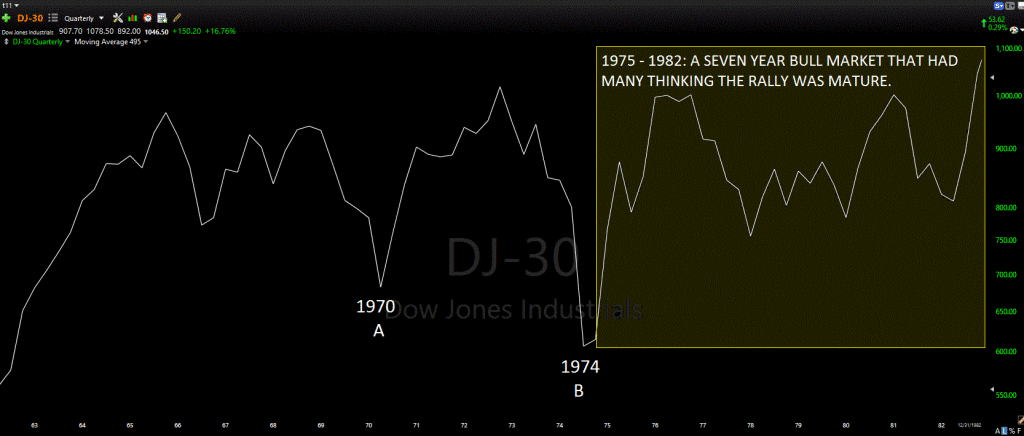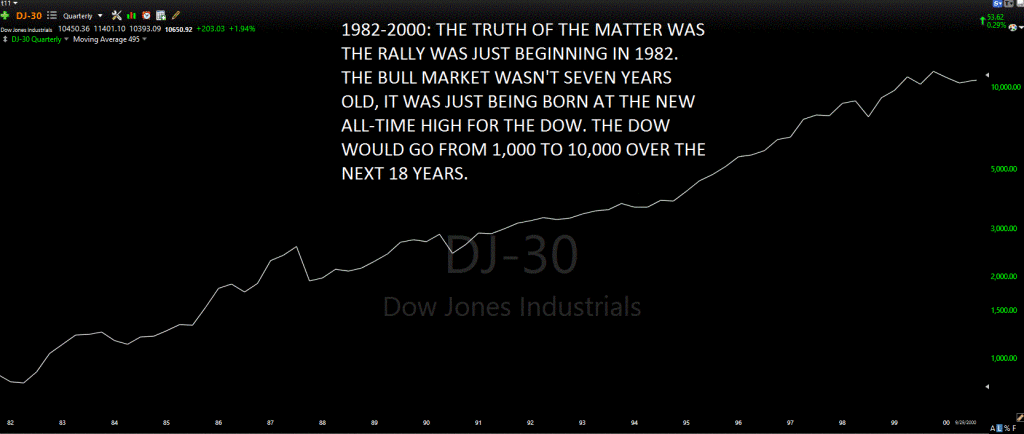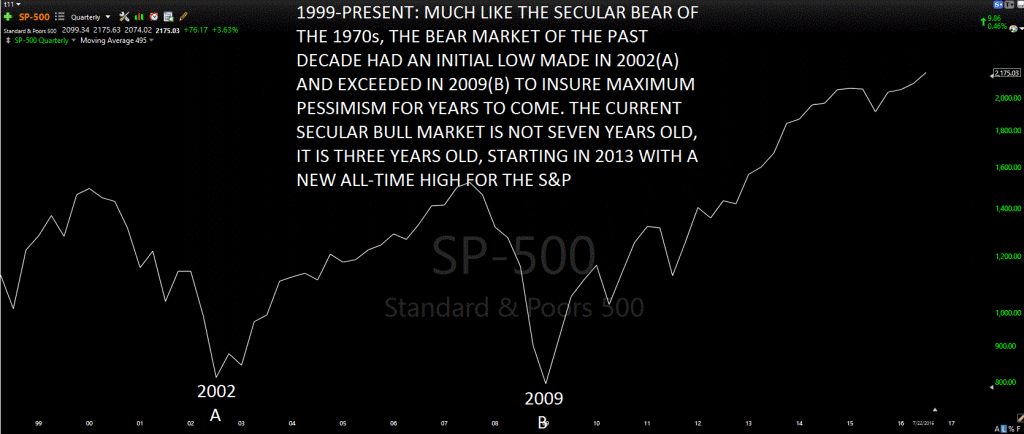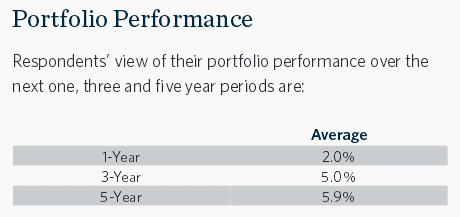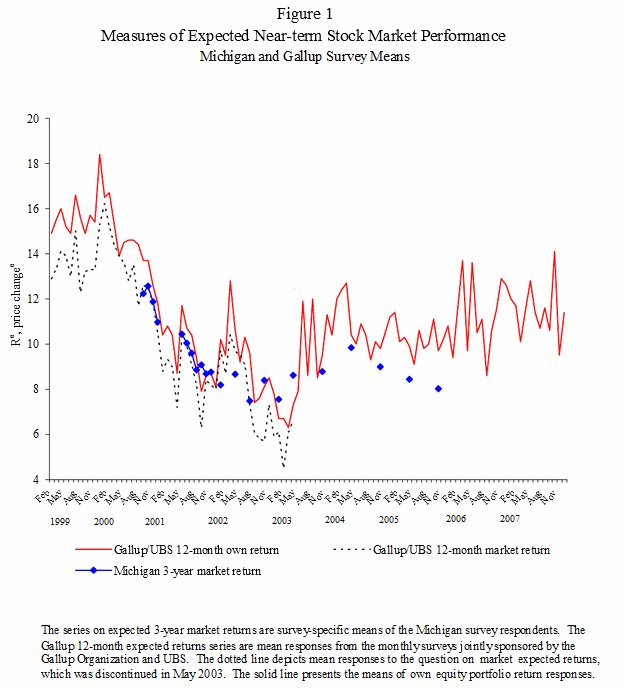What follows is a section from the “Thoughts & Analysis” portion of my monthly letter to investors at T11 Capital.
Thoughts & Analysis
This Three Year Old Bull Market
One of the many issues that investors face in the current environment is their inability to accurately gauge the age of the current bull market. The traditional argument has been and continues to be that the current secular bull market must have started at the 2009 bottom simply because stocks have been moving up since bottoming at 666.79 on the S&P 500 seven years ago.
What investors seem to overlooking when they argue that a bull market commences at the point of reversal and subsequent long-term appreciation is context. The context that is being missed in our most recent example is that the S&P 500 had made a low of 768 back in 2003 after the secular top in 2000 to the 18 year bull run that started in 1982. The 2009 “credit crisis” bottom of 666.79 was a thorough retest of the 2003 lows, constituting what was essentially a long-term sideways range for stocks that is typical of the end of a secular bull run.
For example, when the Dow topped in 1929, dropping from a high of 386 to 40 in 1932, the subsequent volatile sideways range took place over a span of 25 years, marking multiple starts and stops before a new all-time high and a new secular bull market started in 1954. Those who took it upon themselves to correlate the age of the bull market to the simple act of stocks moving up at that time were sold on the idea that the bull market was 18 years old simply because stocks bottomed in 1932. The truth of the matter in 1954 was that a secular bull market was just being born. A secular bull, by the way, that would triple the value of the Dow over the next 13 years into the 1966 top.
Subsequently, a sideways range emerged that saw stocks go nowhere from 1966 – 1981. Along the way there was an initial bottom that took place in 1970 with a low of 627, which surely had market participants reeling after witnessing a near 50% drop from the all-time highs in the Dow just four years earlier. It didn't end there, however, much like the initial low on the Dow in 2003 after the mess leftover from the internet bubble started to mend, that would not be the ultimate low. The markets had one more bearish act in store for investors to completely dissuade them from purchasing equities over the next decade or two.
From 1973 – 1974 the Dow would drop from 1067 to 570, creating a secondary low that created such disgust with equities that it guaranteed investors from being able to emotionally and intellectually cope with the concept that the Dow would gain nearly 2000% over the next 25 years.
An initial low made in 1970(A) would be exceeded in 1974(B) creating enough pessimism to carry the market forward for the next 25 years, with a new secular bull market starting in 1982.
When the secular bull market kicked off in 1982, a large majority of investors weren't simply bearish, as I demonstrated in last month's letter with the headline quotes from that era, but they were also completely clueless as to the age of the bull market, believing that the 1974 low marked the beginning. So by the time the secular bull market kicked off in 1982 through the simple act of the Dow making a new all-time high, investors wrongly assumed that the bull was 8 years old. In reality it was a few months old.
The secular bull run from 1982 would last 18 years into the 2000 top.
When studying the pattern of these generational trends in the broad market averages closely, something of vast importance starts to become apparent. The bearish/sideways cycles that mark the end of secular bull trends have been steadily contracting in length of time while the subsequent secular bull trends have been expanding.
There is an entire discussion that can take place as to the fundamental dynamics behind such behavior in the markets. The advent of increasingly sophisticated forms of monetary policy on an increasingly global, coordinated scale over the past century are at the root of phenomenon of steadily weakening contractions followed by steadily powerful expansions.
We are currently in the midst of the most powerful demonstration of global, coordinated central bank prowess in world economic history. Why then is it unreasonable, when fully grasping the dynamics behind generational, secular bull markets of the past to believe we are in the first inning of this bull market?
Not only that, but when taking into account the level of continuous monetary stimulus of an unprecedented scale and nature, it would be perfectly reasonable to assume that the reaction in equities will be proportional to the stimulus created. Thus far, the reaction in equities has been fairly tame, not accurately reflecting the flood of capital sloshing around the global economy.
If we are to believe in the incrementally progressive nature of secular bull markets over the past 100 years, then there is no choice but to assume that the current secular bull will not only be with us into the end of this decade, but into the end of the next one, as well. What is considered a reasonable earnings multiple will be redefined, just as what is thought of as a reasonable interest rate on government debt has been redefined in recent years.
Owning equities in 2016 is not very different than owning them in 1982 and 1954. The attitude towards equity ownership are much the same, rooted in negativity, skepticism and the belief in an eventual catastrophic event being imminent. The dynamics are much the same, freshly emerging from a prolonged period of equity underperformance. The headlines match, as I recently demonstrated in the June letter.
The outcome then will very much resemble the outcomes of the past. A very long-term, nearly uninterrupted bull market that turns skeptics into believers and forces capital to participate incrementally.
Understanding Form and Rhythm
The beginner plunges ahead on a favorite that loses, then bets lightly on a fair-priced horse that wins. He keeps switching amounts and positions, so that he never has a worthwhile bet on a winner at a worthwhile price. He is always one race behind the form of a horse and several races behind the rhythm of the results sequences. --- Robert Bacon (The Secrets of Professional Turf Betting, 1956)
If you were to look at recent commentary regarding the future, long-term returns available via U.S. equity investment, you would have to assume that investors have either become supremely pessimistic, or extraordinarily altruistic in their willingness to express cynicism regarding the financial markets to anyone who will listen. In either case, there is a better than even chance that investors are “several races behind the rhythm of the results sequences.”
Let's examine a prime example of the chronic failure of investors, as a group, to properly gauge the rhythm of the markets with respect to generalized asset allocation. In this case, being that we are in an era of pessimistic, fear-driven extremes, it may be most useful to look at the last incidence of a similar amplitude of emotions. The most relevant of which would be the optimistic extremes of 1999-2000 and shortly thereafter.
Anyone who has paid attention to recent media reports realizes that investor expectations for returns have consistently diminished over the past several years despite the persistence of the bull market at hand. Take, for example, the Commonfund Forum Investor Outlook Survey released in early 2016.
This most recent opinion of future returns comes against an average annual return for the S&P 500 since its inception in 1928 of roughly 10%. Effectively, investors of the modern generation are of the opinion that a 50% reduction in the net returns of equities is the most reasonable outcome going forward.
Of course, this wasn't always the case. The gilded era of secular bull markets in the past yielded a much different attitude towards equities. The last secular bull market, which ended in 2000, had investors believing that substantial future equity gains were a God given right, as sure as death and taxes.
Below is a chart of expected near-term market performance from 1999-2007 from the Federal Reserve in a paper titled, “Expectations of risk and return among household investors: Are their Sharpe ratios countercyclical?”
At its maximum point, at the peak in 2000, investor expectations for future returns were 18% per annum, 80% above the average annual return for the S&P 500 of 10% since 1928. Investor expectations at that point were obviously colored by a completely different set of circumstances that were only revealed as being erroneous in hindsight.
Much like the overly-optimistic tone that led investors to believe they could compound their capital at substantial rates going forward in 2000, when in reality they were on the verge of a decade of carnage ahead, the overly-pessimistic tone of an injured investor class should be looked at with a skeptical eye.
While your average Wall Street bull or bear can whip out dozens of different pieces of evidence to substantiate their respective views of future returns, one fact remains constant on Wall Street: What is obvious is obviously wrong. What is held to be belief should be looked at in disbelief. The contrarian aspect of speculation is the one constant in a world of ever changing variables and landscapes.
To quote Robert Bacon, once again, “The public can never catch up to the form – or the game ceases.”
Regards,
Ali Meshkati

